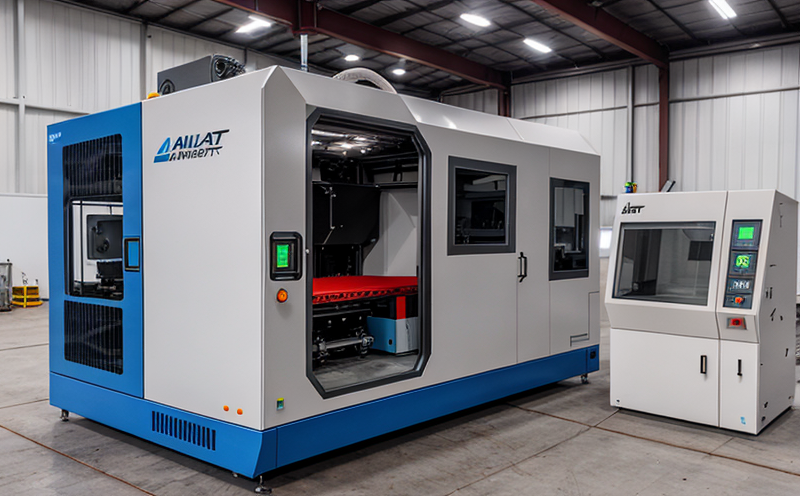ISO 17296-6 Environmental Health and Safety Testing in AM
The implementation of Additive Manufacturing (AM) processes has revolutionized industrial manufacturing, offering unprecedented flexibility and precision. However, with these advancements come new challenges regarding environmental health and safety concerns. The ISO 17296 series specifically addresses the need for robust testing to ensure compliance with environmental health and safety standards.
ISO 17296-6 focuses on the evaluation of potential hazards associated with AM processes, including but not limited to the emission of volatile organic compounds (VOCs), particulate matter, and other airborne contaminants. This standard is crucial for ensuring that AM technologies are used in a manner that minimizes risks to both human health and the environment.
The testing protocol outlined in ISO 17296-6 involves several key steps, each designed to assess different aspects of environmental health and safety. Specimens prepared from various materials commonly used in AM processes undergo rigorous testing under controlled conditions. The instrumentation employed includes air quality monitors, gas chromatographs, particulate counters, and other advanced analytical tools.
The process begins with the selection of appropriate specimens that represent typical AM components or parts. These specimens are then subjected to a series of tests aimed at measuring the levels of various emissions. The results of these tests provide critical data on the potential environmental impact of AM processes. Compliance officers and quality managers rely on this information to make informed decisions about the safety of their operations.
For R&D engineers, ISO 17296-6 offers a valuable framework for refining AM processes to reduce emissions and improve overall sustainability. The standard encourages continuous improvement by providing a benchmark against which performance can be measured. Procurement teams benefit from this testing as well, ensuring that the materials they source are not only cost-effective but also environmentally responsible.
The importance of ISO 17296-6 cannot be overstated in an era where sustainability and compliance are paramount. By adhering to these standards, industrial manufacturers can enhance their reputation for corporate social responsibility while avoiding costly penalties associated with non-compliance.
- Comprehensive evaluation of environmental impacts
- Precise measurement of emissions from AM processes
- Support for continuous improvement in AM technologies
- Achieving compliance with international health and safety regulations
- Enhanced reputation for corporate social responsibility
Why It Matters
The importance of ISO 17296-6 cannot be overstated in an era where sustainability and compliance are paramount. By adhering to these standards, industrial manufacturers can enhance their reputation for corporate social responsibility while avoiding costly penalties associated with non-compliance.
Environmental health and safety testing is critical because it ensures that the processes used in AM do not pose undue risks to workers or the environment. This includes minimizing the release of harmful substances into the air, water, and soil. Compliance with these standards also helps companies meet regulatory requirements and avoid legal issues.
For R&D engineers, understanding the environmental impact of their work is essential for innovation. By testing materials and processes according to ISO 17296-6, they can identify areas for improvement and develop more sustainable solutions. Compliance officers play a crucial role in ensuring that all operations adhere to these standards, thereby reducing liability and improving overall safety.
Procurement teams benefit from this testing by selecting materials that meet not only performance criteria but also stringent environmental standards. This ensures that the supply chain supports sustainability goals without compromising on quality or reliability.
Applied Standards
The ISO 17296 series of standards has been developed to provide a comprehensive approach to testing and evaluating environmental health and safety aspects in AM. These standards are widely recognized and accepted across the industry, making them an essential tool for manufacturers looking to ensure compliance with international best practices.
ISO 17296-6 specifically focuses on the assessment of emissions from AM processes. It provides detailed protocols for setting up test environments, preparing specimens, conducting tests, and analyzing results. The standard covers a range of parameters including but not limited to particulate matter, volatile organic compounds (VOCs), and other airborne contaminants.
The application of these standards ensures consistency and accuracy in testing across different laboratories and jurisdictions. This is particularly important given the global nature of manufacturing industries, where companies may operate in multiple countries with varying regulatory requirements.
Benefits
- Elevates corporate social responsibility through sustainable practices
- Avoids legal issues and associated fines by ensuring compliance
- Supports continuous improvement in AM technologies
- Facilitates the selection of environmentally responsible materials for procurement
- Ensures consistent and accurate testing across different laboratories





